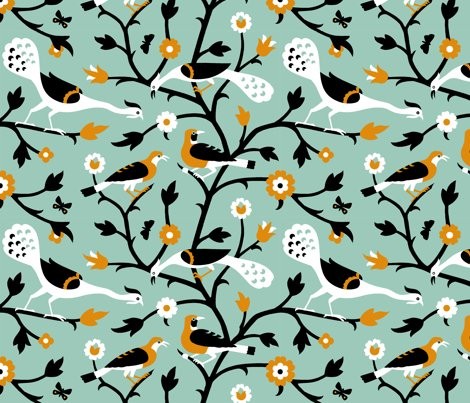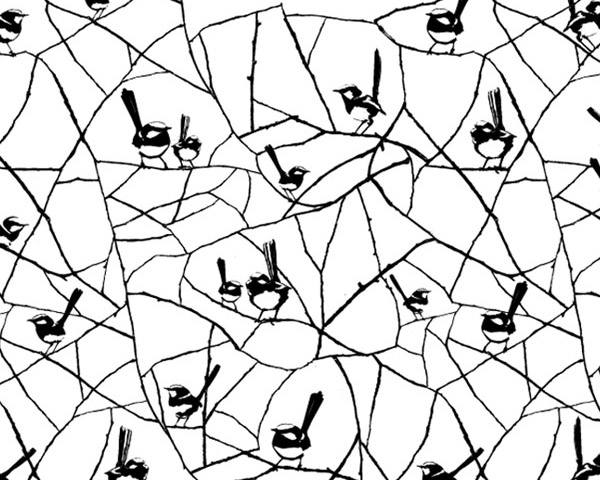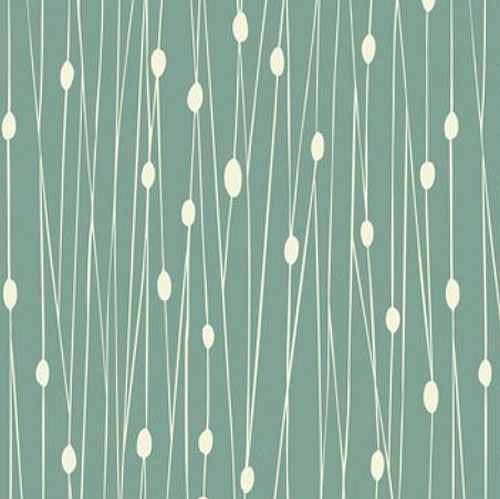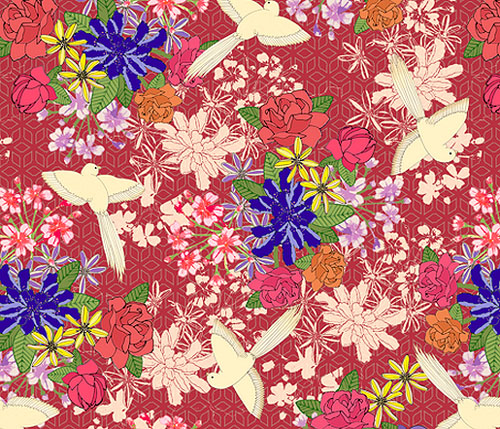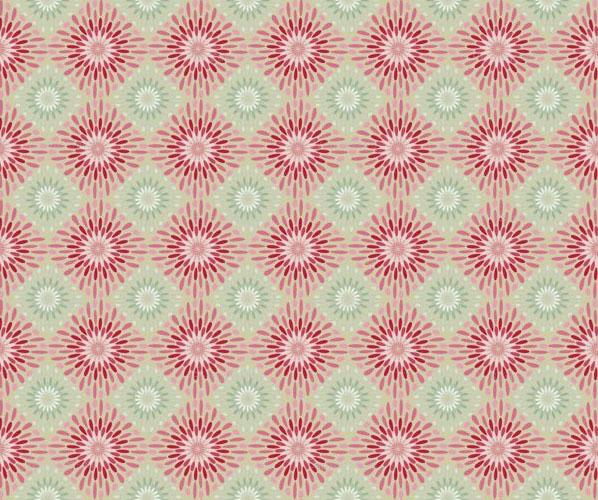{Persian Birds by Muhlenkott}
So many of us in the craft world have skills across multiple disciplines – but there are no doubt processes and skills that you have NO idea about, right?
For example – some of you might have no idea how I take raw silver and turn it into jewellery via the use of hammer, anvil, and soldering torch. For me? I have no idea about the creation of patterns. I’ve always wondered how on earth people come up with these amazing patterns that just go together on every side.
Well, today we welcome Julie Gibbons, who takes us through the fascinating process of designing a pattern repeat.
*****
Let me just put it out there – I LOVE pattern. Even when I was a wanna-be punk way back in the (ahem) 80s, I could never just do the all-black thing. Somewhere, somehow, colour and pattern always kind of snuck onto my outfit. And now, my wardrobe is full of it! I have a lot of tops and skirts, and I love opening my drawer in the morning and deciding what kind of fabulous clashy pattern combination I can make today.
But there are good patterns, and there are not so good patterns. A short browse through Spoonflower will show you that. Sure it’s a bit of “what you likeâ€, but it’s actually a lot more about the use of the principles of design that makes the majority of people look at something, and agree that it is “goodâ€. So, I thought it would be useful to look at a few good ones and see WHY they are good.
Firstly, a few general points. These concepts might sound a bit complicated, but they’re not really –just get a piece of paper and start doodling, and you’ll get the idea.
A good repeat pattern should provide visual interest over the whole surface, even when there is ‘negative space’ (areas of no or little pattern, which can be used to provide balance to a design).
Generally, a good design will have an obvious structure to it (the line or shape that becomes obvious when you stand back from the pattern), but will still include a kind of playful variation of shapes, textures, colours, etc., which adds interest.
Having said that, repetition (of colours, shapes, lines, and/or textures) can also make a design work well. And although colour is a whole area of study on its own, in general terms, designs work best when they stick to fewer colours (although variations in tone of a particular hue work well) rather than more.
And the last thing to remember is that there are always exceptions! So here’s my take on a few designs.
{Ink & Spindle ~ Inky Wrens}
This single colour print is wonderful for a couple of reasons. Firstly, the pattern covers the space fairly evenly, with no obvious blank areas (which can happen especially at the boundaries of a pattern when repeating it) – the lines of the branches criss-cross the space creating a background with an overall delicate texture.
Despite the design being obviously abstract (in that it has no background detail), the lines and shapes are all natural, organic shapes, giving overall cohesion. And those little birds are just the sweetest! If you look closely, you can see there are only about six different images of birds used, but they have been scattered and grouped to create a naturalistic effect.
{Funky Wombat Textiles ~ “birds and beesâ€}
A much more realistic rendering of the subject, this design is tied together by the very strong “S†line of the branch running vertically through it. Again, the whole space is filled well, with plenty of interest and variety created through the flowers, birds and bees. There are lots of gently flowing lines throughout, and it’s underpinned by great drawing skills!
{Bird Textiles ~ Vine Leaves}
Another single colour design with great vertical structure. While shapes are organic, this time the whole is obviously stylised and much simpler, with a nice variety of angles and details on the leaves in the four vines.
{Heather Dutton ~ Entangled}
A very simple design that demonstrates you don’t have get complicated to have a good design. All the line and droplet elements are scattered fairly evenly through the design, creating an overall texture rather than any specific image. Interest is created through the variety in the scattering and criss-cross, and the structure is achieved with the overall vertical direction of the fabric.
{Lydia Meiying ~ Japanese birds in red}
Structure here is provided by the purple flowers rather than any lines or direction – they become the focal point (the thing that we look at first), so our eyes don’t drown in the busy-ness of much of the rest of the design.
The colour scheme is based strongly on red (with lighter and darker tonings of the same hue), punctuated by the purple, with a few odd splashes of other colours. The purple flowers and cream birds are stronger, simpler elements that balance out the ditsiness of the background profusion of flowers. The birds move around in a circle adding some balancing gentleness to an otherwise very bold design.
{Susieswe ~ Red Green Abstract}
Medallions in a grid pretty much always look good. This one I love particularly for its clever variations in tone, while sticking to a palette of just two colours. The diamond pattern made by the alternating red and green is well-defined, and is punctuated by paler centres.
The palette is muted with the stronger red floating over the more subtle green. It’s kind of starry, kind of flowery, and it resonates of linoleum floors, in the best possible way.
This is just an intro, and I could write heaps more about each, why they work, and why I like them! The elements and principles of design are a great set of tools that should be added to your repertoire as a designer. If you understand the basics you’re way ahead, and they are best understood by USING them. They can be applied to all areas of visual design, so go ahead and have fun designing!
*****
All images provided courtesy of their respective designers.
Julie Gibbons is tractorgirl, a maker of homewares and accessories, and a lover of colour, texture and pattern. She completed her PhD Fine Arts in 2001, majoring in Silversmithing, and now she blogs about contemporary craft, surface design, food and books at tractorgirl.com.au.
***
Want more Epheriell-y goodness? Subscribe to Epheriell Designs! Also, you can follow me on  Twitter!
